The Counter-Trafficking Data Collaborative (CTDC), developed by IOM and Polaris, with contributions from Liberty Asia, is the first global data hub on human trafficking, with data contributed by counter-trafficking organizations around the world. It facilitates an unparalleled capacity for cross-border, inter-agency data analysis to provide the counter-trafficking movement with greatly improved evidence for policy and programming. Equipped with up to date data and analytics, decision makers will be empowered to design and implemented more targeted and effective intervention strategies to combat this crime.
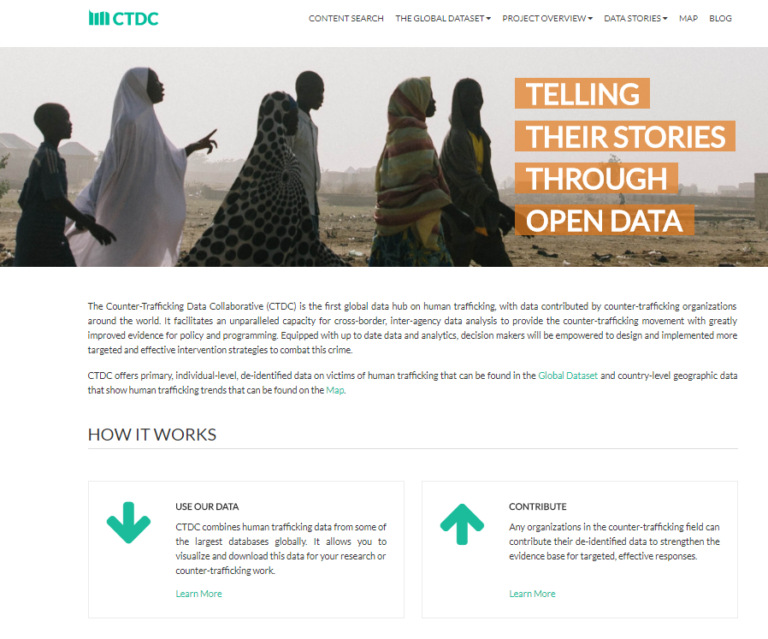
CTDC offers primary, individual-level, de-identified data on victims of human trafficking that can be found in the Global Dataset and country-level geographic data that show human trafficking trends that can be found on the Map.
The Global Dataset
The Global Dataset available to download from the website has been k-anonymized(k=11), and currently has approximately 47,000 observations. The complete, non k-anonymized dataset currently contains nearly 80,000 observations. The visualizations on this website are based on the complete, non k-anonymized dataset. The data in both of these datasets is based on case management data gathered on identified cases of human trafficking which recorded in a case management system, as well as on data gathered from individuals contacting a counter-trafficking hotlines. The number of observations is constantly increasing as new records are added by the contributors.
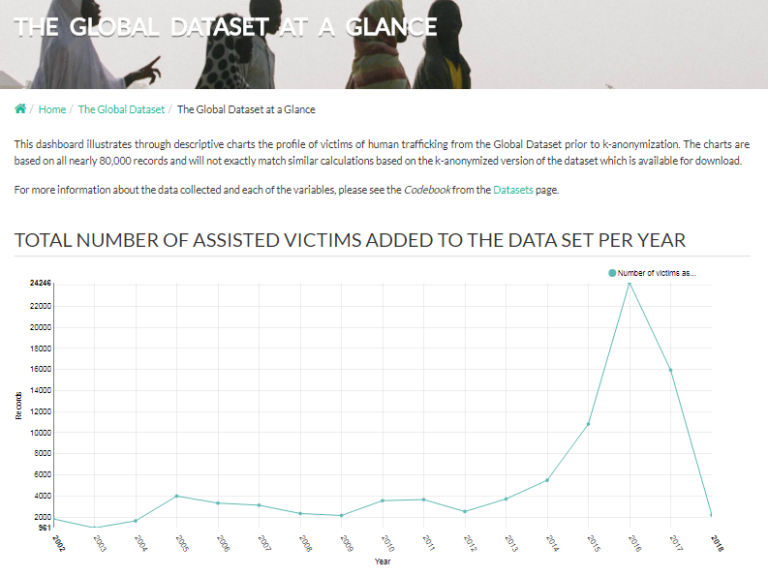
Exploitation of Victims: Trends
Data reflects important progress made in recent years in the field of counter-trafficking in building recognition and awareness that men are also victims of trafficking and that trafficking does not always involve sexual exploitation.
Historically, anti-trafficking efforts tended to focus on combating trafficking for the purposes of sexual exploitation. As a result, the victims of trafficking that were identified tended to be those who had been trafficked for sexual exploitation. As anti-trafficking efforts have expanded to include a focus on trafficking for the purposes of labour exploitation, identification of victims of trafficking for the purposes of labour exploitation has increased.
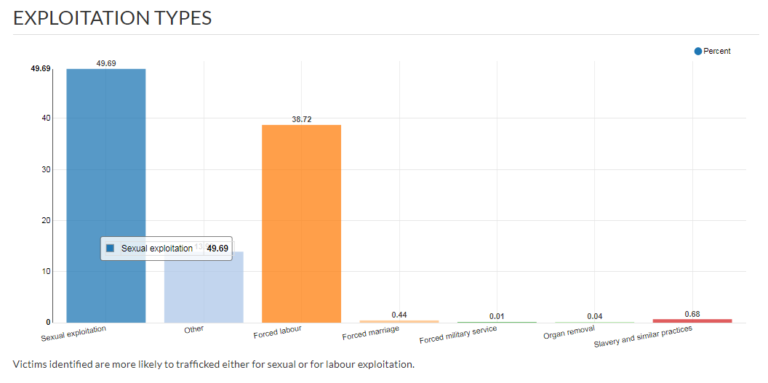
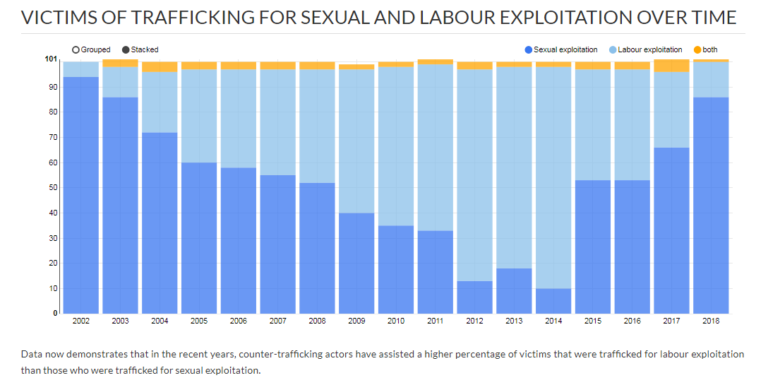
The Map
The Map illustrates trends related to the profile of the victims of human trafficking in different parts of the world, based on the original combined dataset prior to k-anonymization. The Map currently shows only country level overview of main trends rather than exact coordinates or route data.
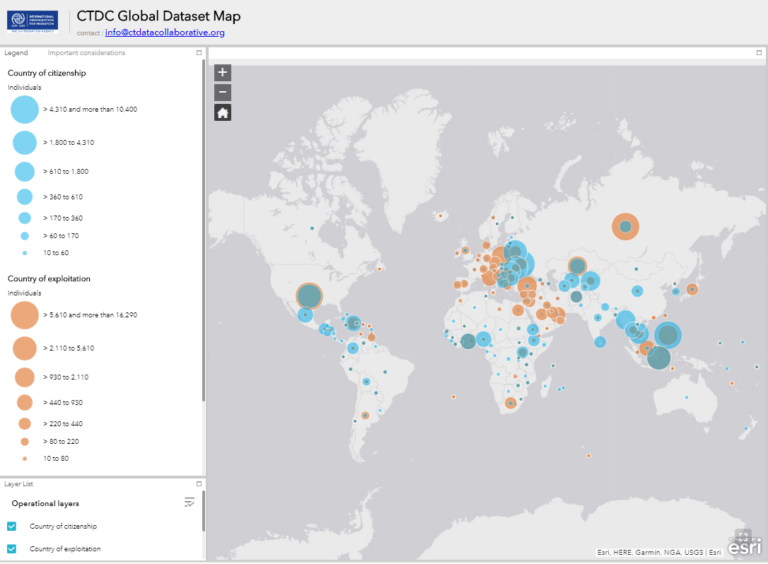
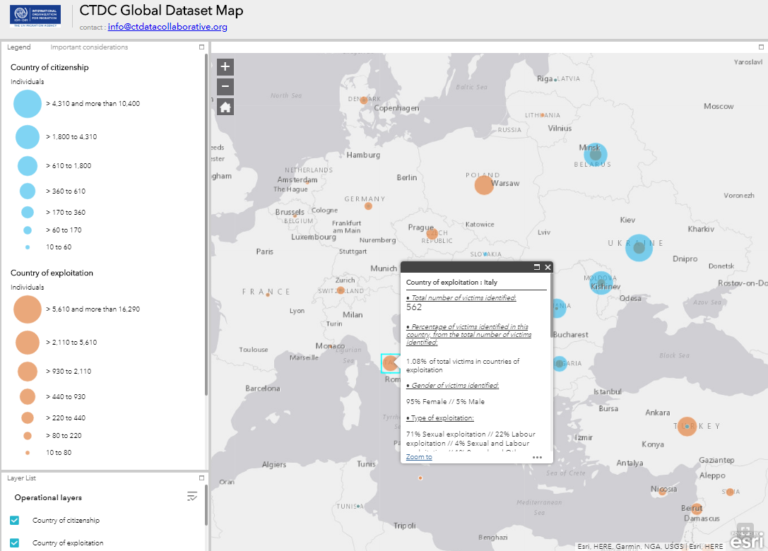
Click here to go to the Counter-Trafficking Data Collaborative website






